Send us a Message
- Destinations
- Tours
- By Destinations
- By Themes
- Suggested Combination
- Duration
- About Us
- Reviews
Pad Thai
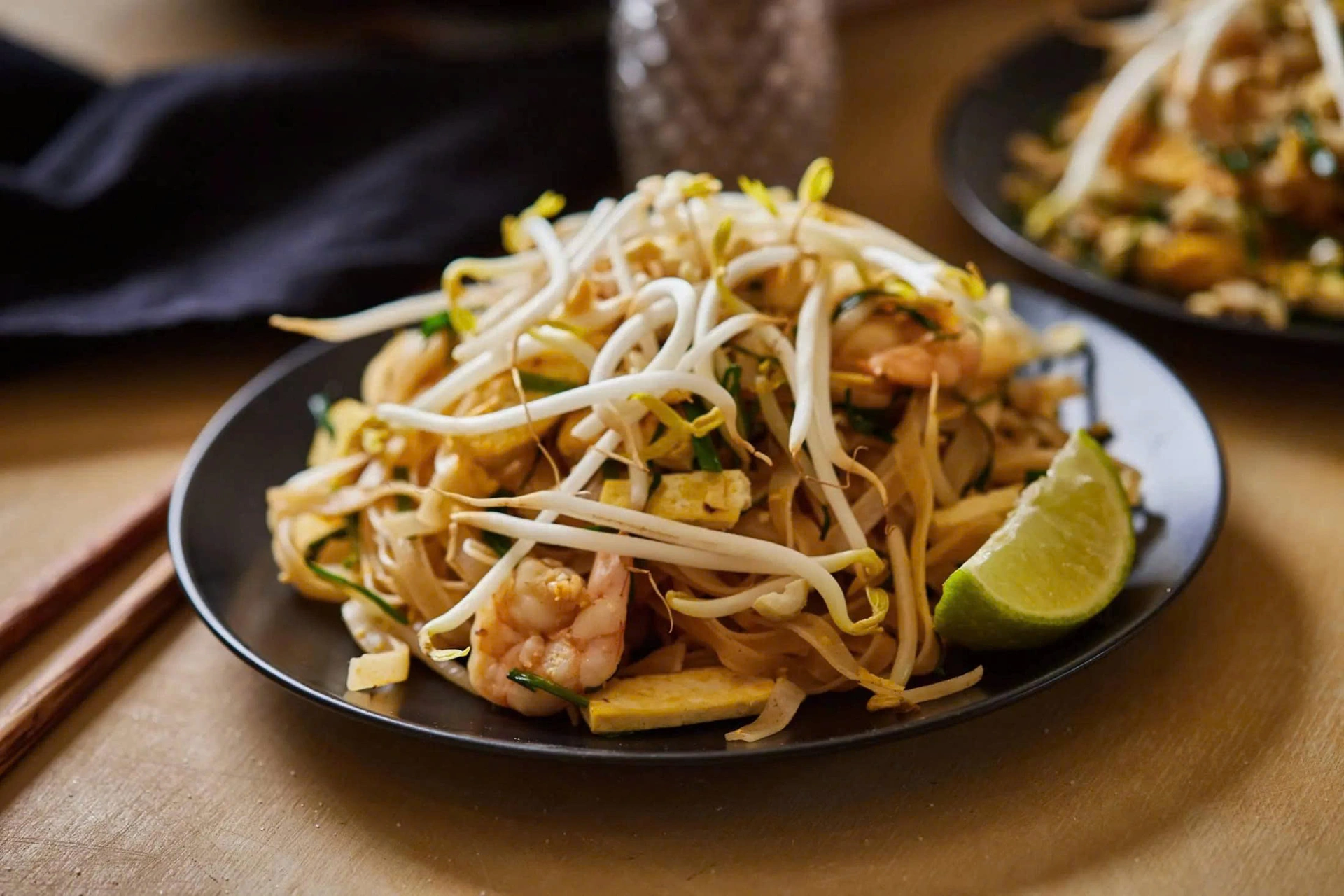
Pad Thai is Thailand’s most famous stir-fried noodle dish, loved by both locals and travelers. Made with rice noodles, egg, tofu or shrimp, bean sprouts, and crushed peanuts, it’s tossed in a tangy-sweet sauce of tamarind, fish sauce, and a hint of chili. Often served with lime wedges and fresh herbs, Pad Thai perfectly balances Thailand’s signature flavors—sweet, sour, salty, and spicy—in one plate. Whether enjoyed at a street food stall or in a restaurant, it’s a must-try dish for anyone visiting Thailand.
Tom Yum Goong
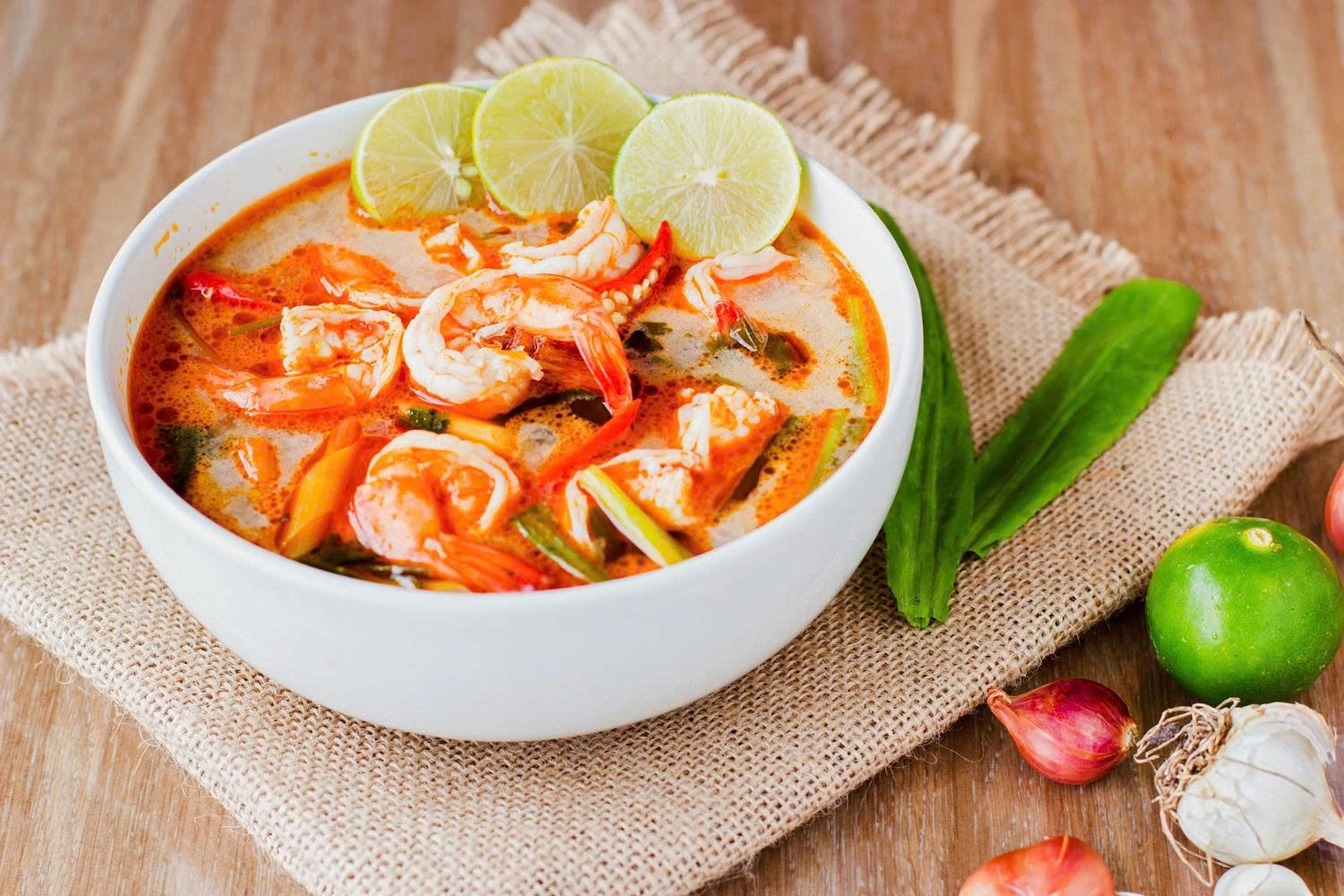
Tom Yum Goong is Thailand’s iconic hot and sour soup, famous for its bold and aromatic flavors. Made with fresh prawns, lemongrass, kaffir lime leaves, galangal, chili, and lime juice, it delivers a perfect balance of spicy, sour, salty, and fragrant notes. Often enriched with mushrooms and a splash of creamy coconut milk or evaporated milk, this dish is both comforting and exciting. Widely enjoyed across Thailand, Tom Yum Goong is a must-try for travelers seeking the true taste of Thai cuisine.
Khao Man Gai
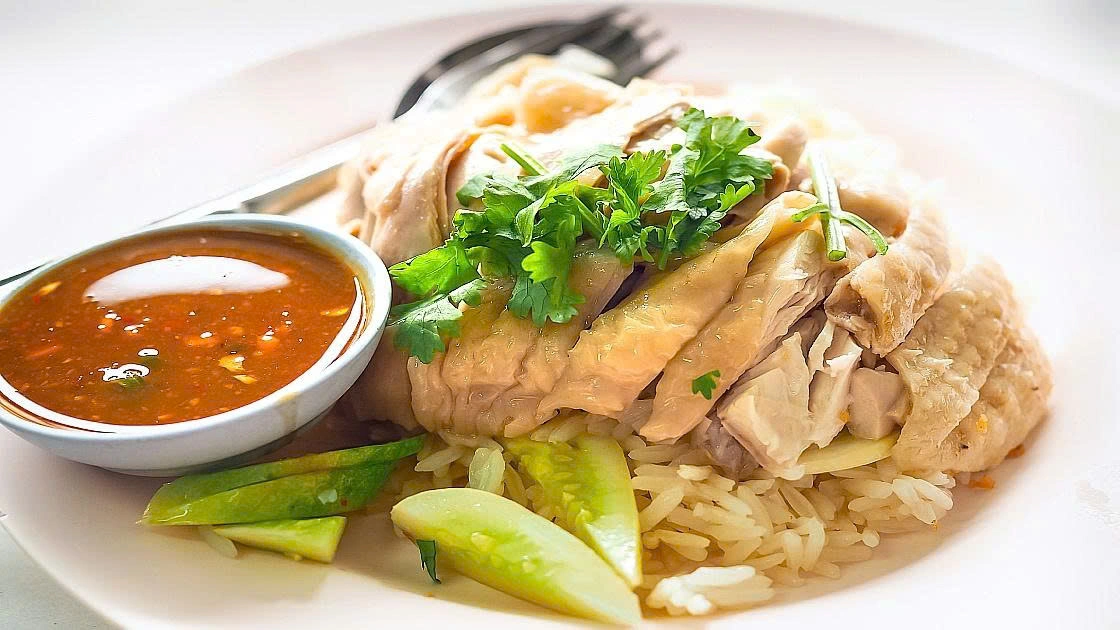
Khao Man Gai, often called Thailand’s version of Hainanese chicken rice, is a simple yet comforting street food favorite. It features tender poached chicken served over fragrant rice cooked in chicken broth, accompanied by a flavorful dipping sauce made from fermented soybeans, ginger, garlic, and chili. A light chicken soup with winter melon is usually served on the side, making it a balanced and satisfying meal. Popular with locals for breakfast, lunch, or dinner, Khao Man Gai is a must-try for those who enjoy Thailand’s homestyle comfort food.
Green Curry (Gaeng Keow Wan)
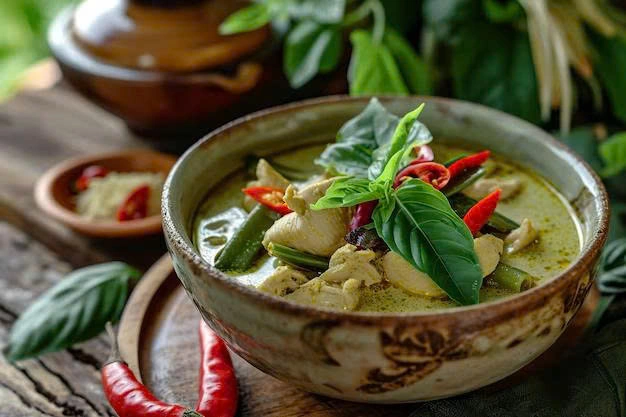
Green Curry, or Gaeng Keow Wan, is one of Thailand’s most beloved dishes, known for its rich, aromatic flavors and vibrant green color. Made with coconut milk, green curry paste, Thai eggplants, and fragrant herbs like basil, it often includes chicken, beef, or fish balls. The curry is mildly sweet yet spicy, offering a perfect balance of creaminess and heat, and is usually enjoyed with steamed rice or rice noodles. For travelers, Green Curry is a must-try dish that showcases the heart of Thai comfort food.
Som Tum (Thai green papaya salad)
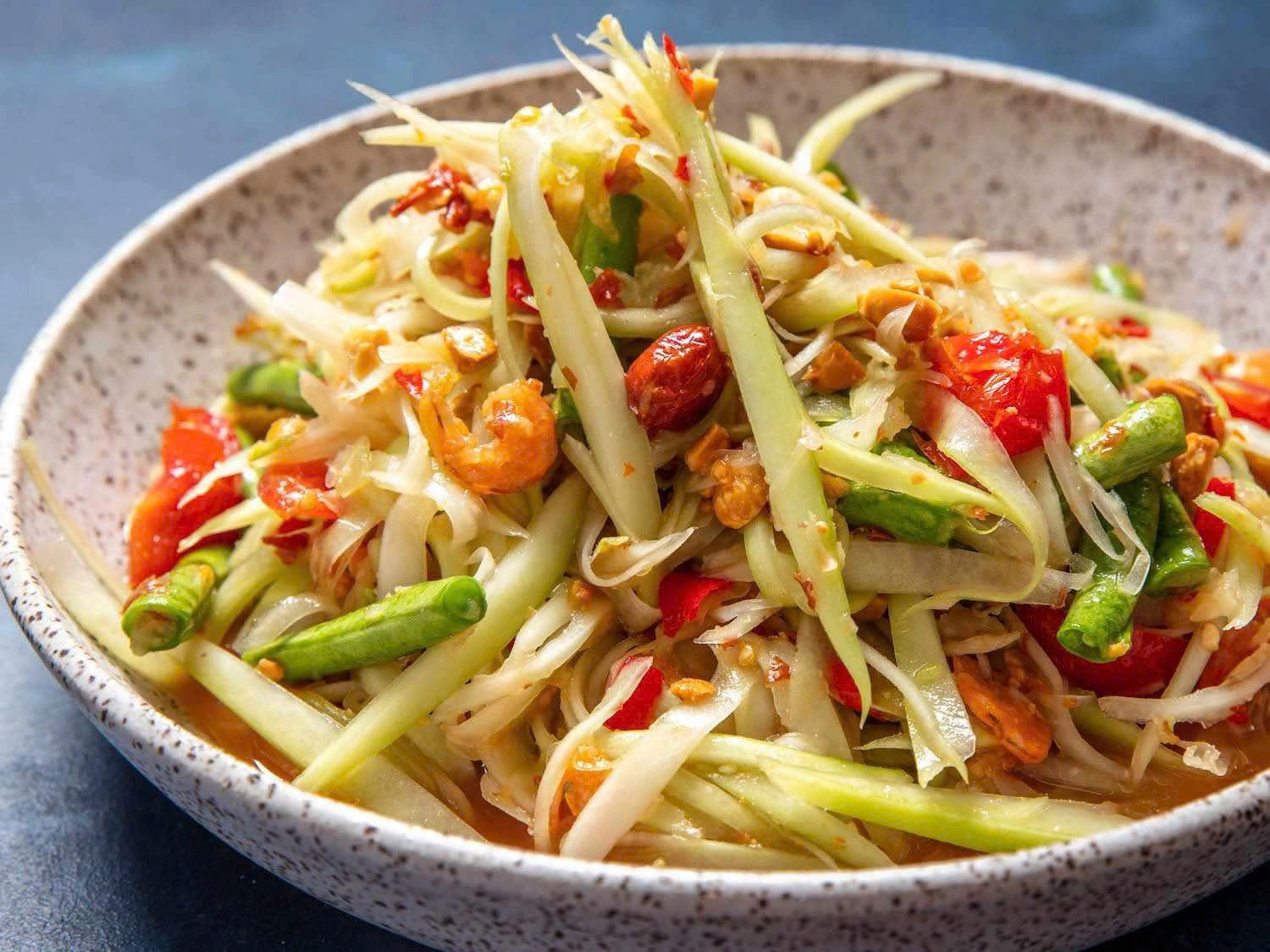
Som Tum, or Thai green papaya salad, is one of Thailand’s most popular street food dishes, especially in the northeast (Isan). Made by pounding shredded unripe papaya with chili, lime, fish sauce, garlic, tomatoes, and peanuts in a mortar and pestle, it delivers the perfect balance of spicy, sour, salty, and slightly sweet flavors. Fresh, crunchy, and full of zest, Som Tum is a refreshing dish often enjoyed with sticky rice and grilled meat, making it a must-try for anyone seeking the true taste of Thai cuisine.
Khao Soi
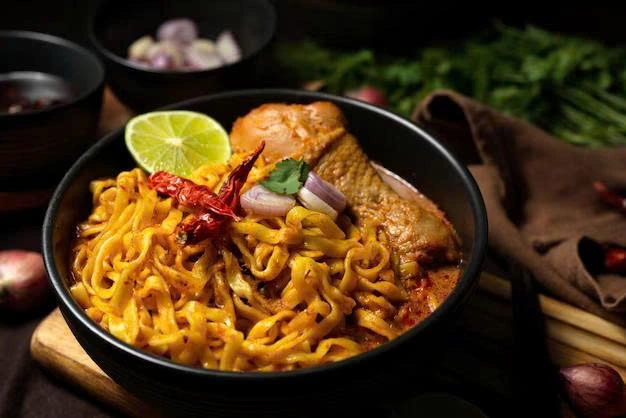
Khao Soi is a signature dish of Northern Thailand, especially popular in Chiang Mai. This rich and comforting curry noodle soup combines soft egg noodles in a fragrant coconut curry broth, topped with crispy fried noodles for extra texture. It’s usually served with chicken or beef and comes with side garnishes like pickled mustard greens, shallots, lime, and chili oil to adjust the flavor to your taste. Creamy, spicy, and aromatic, Khao Soi is a must-try dish that reflects the unique culinary traditions of Northern Thailand.
Kaeb Moo (crispy pork rinds)
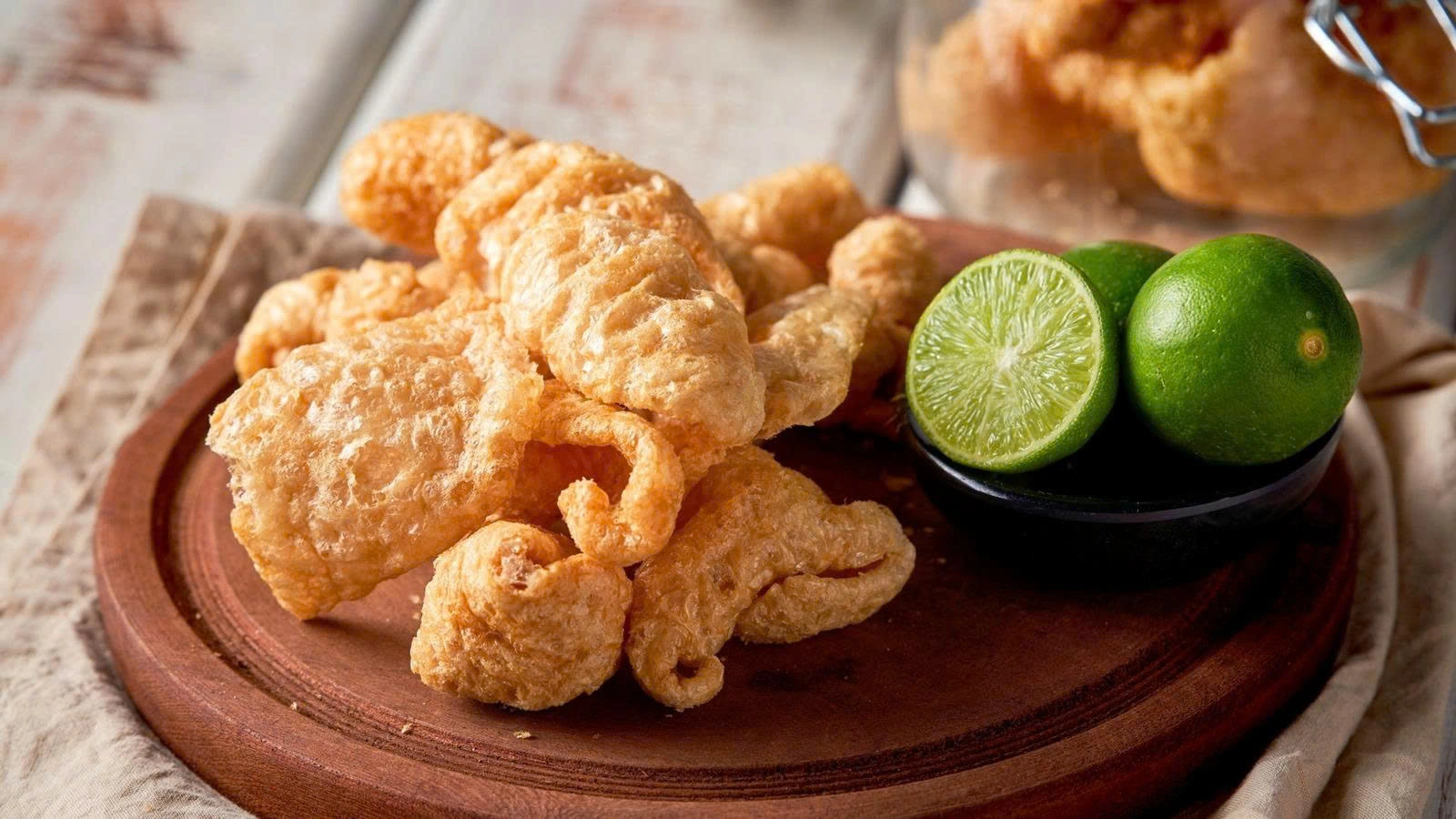
Kaeb Moo, or crispy pork rinds, is a popular snack and side dish from Northern Thailand. Made by deep-frying seasoned pork skin until light and crunchy, it’s loved for its crispy texture and savory flavor. Kaeb Moo is often enjoyed with chili dips like nam prik ong or nam prik num, or served alongside sticky rice and other northern dishes. Whether eaten as a snack on its own or as part of a traditional meal, Kaeb Moo is a delicious taste of northern Thai food culture.
Sai Ua (Northern Thai sausage)
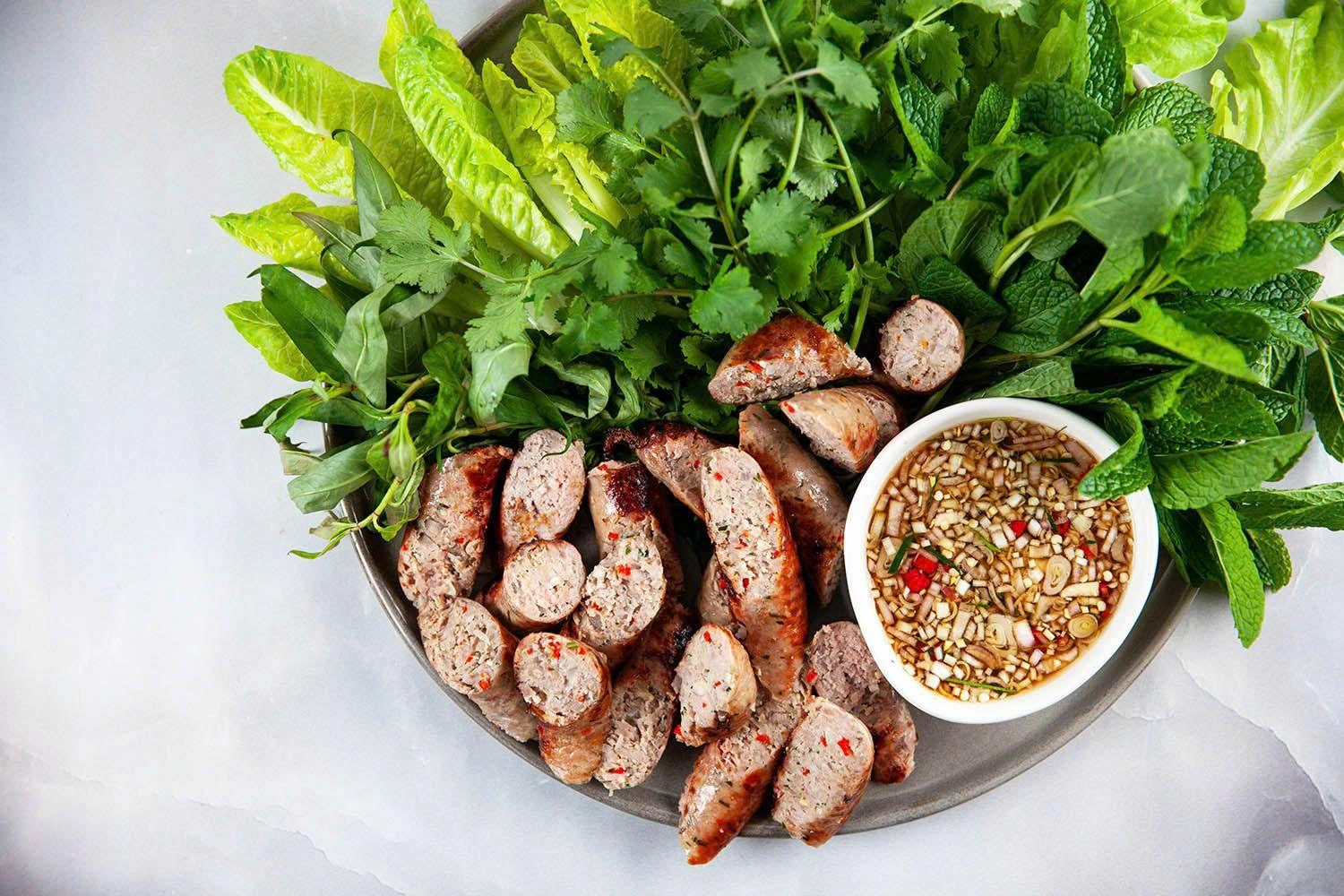
Sai Ua, or Northern Thai sausage, is a flavorful specialty from Chiang Mai and the surrounding region. Made with minced pork mixed with herbs, chilies, lemongrass, kaffir lime leaves, and curry paste, the sausage is grilled until aromatic and slightly smoky. Bursting with spicy and herbal flavors, Sai Ua is usually sliced and enjoyed with sticky rice, fresh vegetables, or local chili dips. For travelers, it’s a must-try dish that captures the bold and unique taste of Northern Thai cuisine.
Nam Prik Num
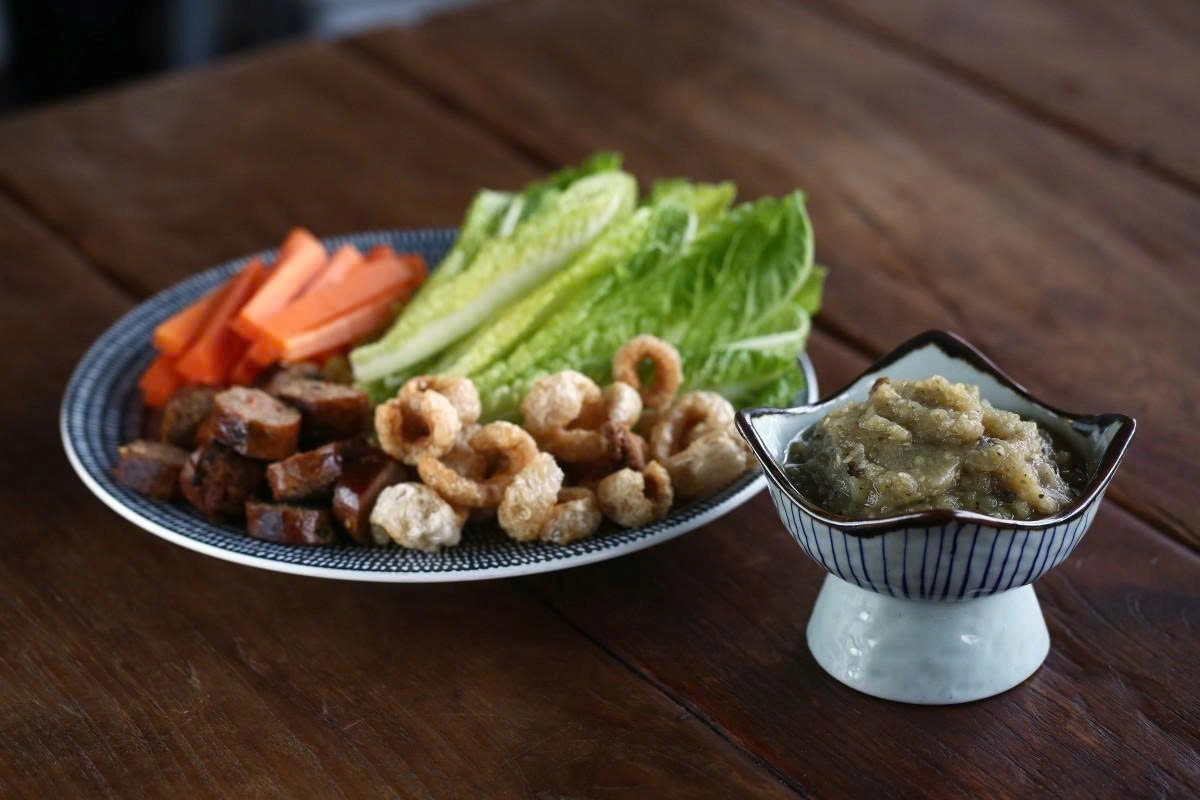
Nam Prik Num is a classic Northern Thai chili dip made from roasted green chilies, garlic, shallots, and coriander, pounded into a smoky and mildly spicy paste. It’s usually eaten with sticky rice, pork cracklings (Kaeb Moo), or fresh vegetables. Known for its earthy aroma and balanced heat, Nam Prik Num is a staple in Northern Thai cuisine and a must-try for anyone wanting to experience authentic local flavors.
Gaeng Hang Lay
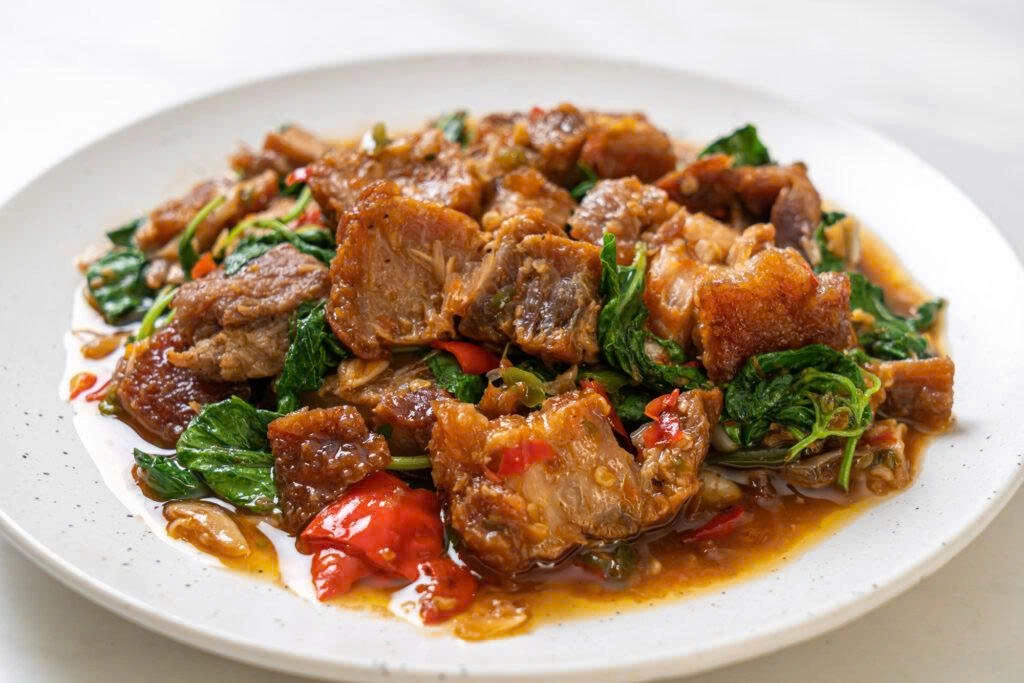
Gaeng Hang Lay is a rich and flavorful curry from Northern Thailand with roots in Burmese cuisine. Unlike typical Thai curries, it does not use coconut milk. Instead, it features slow-cooked pork belly or pork shoulder simmered with garlic, ginger, tamarind, and a blend of spices such as turmeric and dried chilies. The result is a slightly sweet, tangy, and aromatic curry with tender meat that melts in your mouth. Often served with steamed or sticky rice, Gaeng Hang Lay is a must-try dish for those who want to explore the deeper, spiced flavors of Northern Thai cooking.
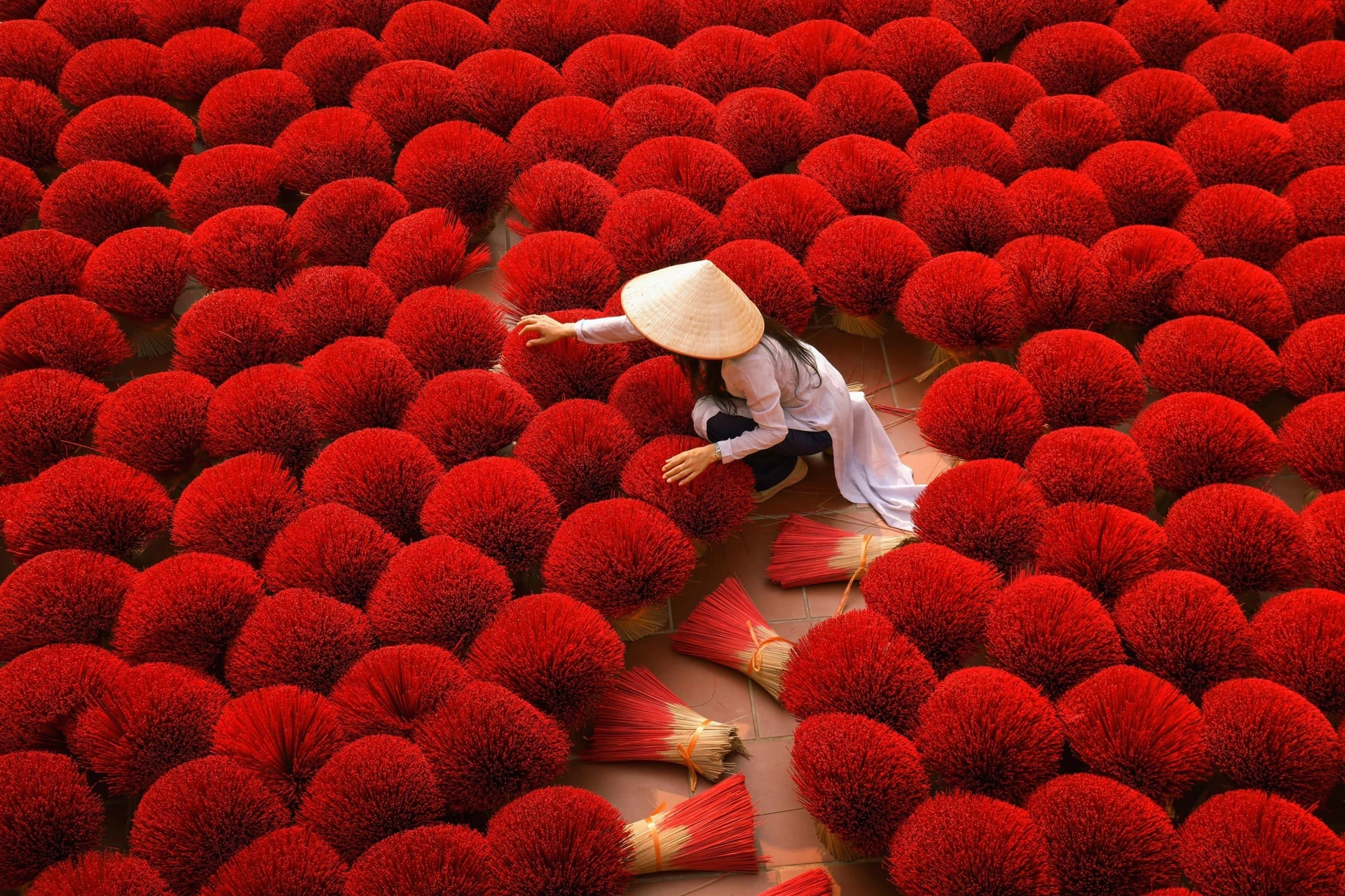
Vietnam is a country full of history, culture, and natural beauty, offering unforgettable experiences for every type of traveler. From bustling cities and ancient temples to serene countryside and pristine beaches, there is something for everyone. With careful planning, attention to local customs, and consideration for dietary or religious needs, Israeli travelers can enjoy a safe, enriching, and memorable journey.

To enter Bali, travelers need a passport valid for 6 months; many nationalities get 30 days visa-free, while longer stays require a Visa on Arrival or e-visa. The island has a tropical climate with a dry season (Apr–Oct) ideal for beaches and festivals, and a wet season (Nov–Mar) with lush green landscapes. Cash in Indonesian Rupiah is essential for small expenses, though cards are accepted in larger venues, and transport mainly relies on taxis, ride-hailing apps, scooters, or private drivers. Visitors should respect local customs—dress modestly at temples, remove shoes in sacred spaces, and use the right hand when giving or receiving items.
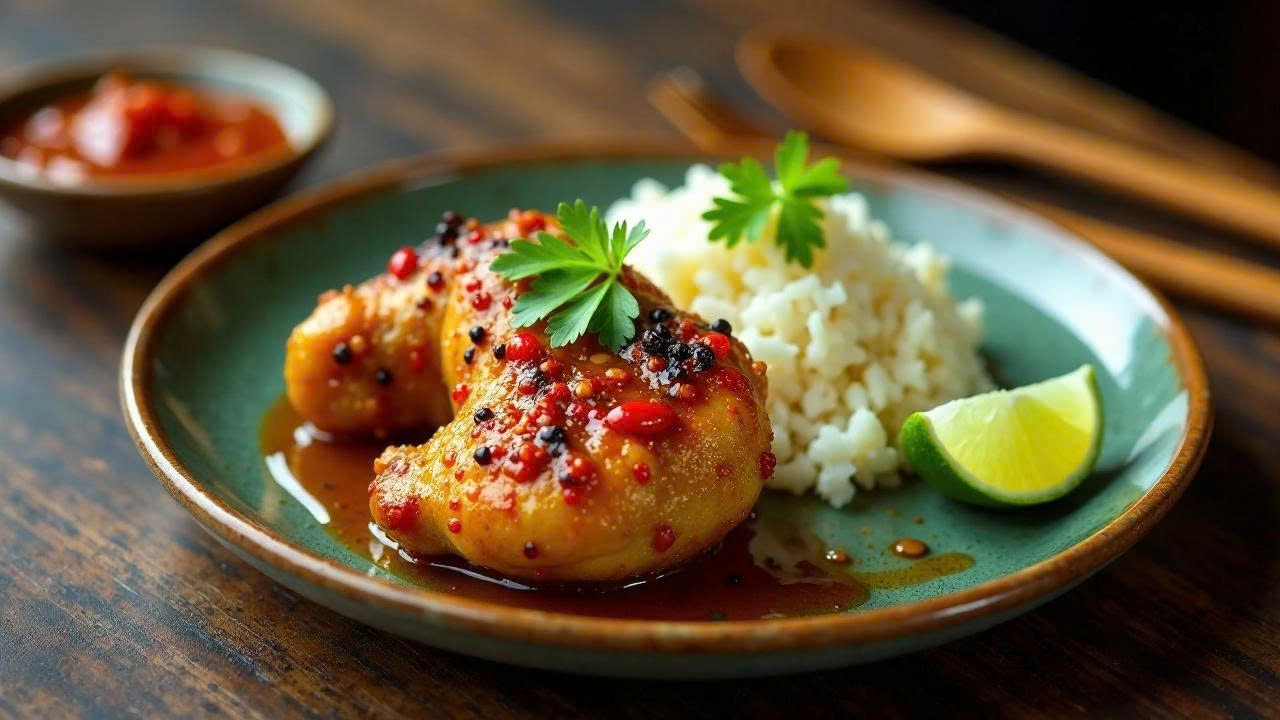
Balinese cuisine is a vibrant reflection of the island’s culture, shaped by its Hindu heritage, fertile volcanic soils, and abundant spices. Meals are a harmonious balance of flavors spicy, savory, sweet, and aromatic—brought together through fresh herbs, coconut, peanuts, and chili-based spice pastes known as bumbu. Rice is the centerpiece of most meals, complemented by grilled meats, seafood, and an array of vegetable dishes. Many recipes are deeply rooted in ceremonial traditions, often served during temple festivals and family gatherings, making Balinese food not only a culinary delight but also a cultural journey.

Nusa Penida is a stunning island off Bali’s southeast coast, famed for its rugged cliffs, crystal-clear waters, and dramatic landscapes. Highlights include Kelingking Beach with its dinosaur-shaped headland, Angel’s Billabong, and Broken Beach. Popular for snorkeling and diving, the island offers encounters with manta rays and vibrant coral reefs, making it a paradise for adventure and nature lovers.

Uluwatu is renowned for its dramatic sea cliffs, world-class surf breaks, and breathtaking ocean views. At its heart lies the iconic Uluwatu Temple, perched high above the waves and famous for sunset Kecak dance performances. With luxury resorts, hidden beaches, and a relaxed coastal vibe, Uluwatu is a perfect blend of culture, adventure, and natural beauty.
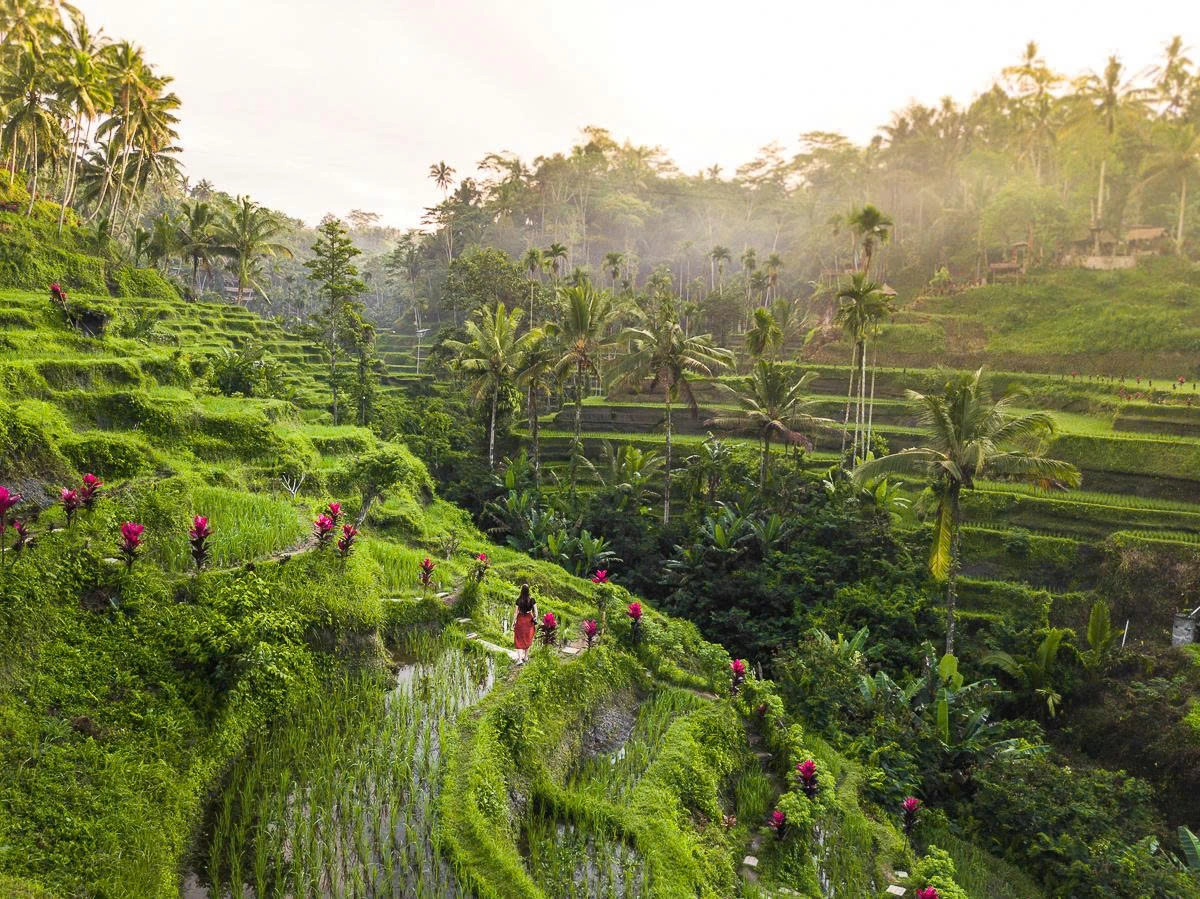
Ubud is the cultural and spiritual heart of Bali, surrounded by rice terraces, lush forests, and traditional villages. Known for its art, dance, and handicrafts, it’s also a hub for yoga, wellness, and spiritual retreats. With its temples, galleries, and serene landscapes, Ubud offers a deeper connection to Balinese heritage and nature.
Preparing for your upcoming trip to Asia?
Let us know what we can arrange for you!